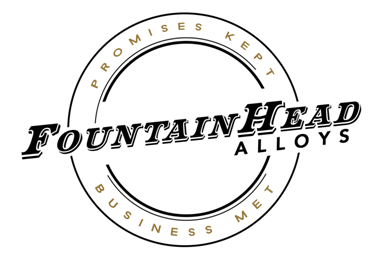UNS N07080 | Alloy 80A | ASTM B637 | DIN 17742 | HR201 | Nickel-Chromium Alloy | WL Nr. 2.4631
NIMONIC alloy 80A (UNS N07080/W. Nr. 2.4952 & 2.4631) is a wrought, age-hardenable nickel-chromium alloy, strengthened by additions of titanium, aluminum and carbon, developed for service at temperatures up to 815°C (1500°F). It is produced by high-frequency melting and casting in air for forms to be extruded. Electroslag refined material is used for forms to be forged. Vacuum refined versions are also available. NIMONIC alloy 80A is currently used for gas turbine components (blades, rings and discs), bolts, nuclear boiler tube supports, die casting inserts and cores, and for automobile exhaust valves. The alloy’s limiting chemical composition is given in Table 1 (as in British Standard HR1, 201, 401 and 601).
Physical Properties
Some physical properties for NIMONIC alloy 80A are given in Table 2. The density was determined on extruded bar, subsequently forged, and extruded section, subsequently cold rolled, given a heat treatment of 8 hours/1080°C (1976°F)/air cool + 16 hours/700°C (1292°F)/air cool.
The liquidus temperature was determined by inverse cooling techniques, and the solidus by metallographic examination. The accuracy of determination was ±5°C (9°F) for the liquidus temperature and +0, –10°C (18°F) for the solidus.
The magnetic property results were obtained from 4 casts of cold rolled sheet, heat treated 2-3 minutes/1150°C (2102°F)/fluidized bed quenched + 20 minutes/1040°C (1904°F)/air cooled + 4 hours/750°C (1382°F)/air cooled.
The thermal conductivity data were calculated from electrical resistance measurements on 4 fully heat treated specimens using the modified Wiedermann-Franz equation obtained by R.W. Powell. The material was cold rolled sheet, heat treated 2-3 minutes/1150°C (2102°F)/fluidized bed quenched + 1 hour/925°C (1697°F)/air cooled + 4 hours/750°C (1382°F)/air cooled.
Linear thermal expansion data were obtained from 5 casts of as-extruded section, subsequently cold rolled.
The electrical resistivity data in were obtained from 4 casts of cold rolled sheet, heat treated 2-3 minutes/1150°C (2102°F)/fluidized bed quenched + 1 hour/925°C (1697°F)/air cooled + 4 hours/750°C (1382°F)/air cooled.
Chemical Composition
- Carbon………………………………………………………………0.10 max.
- Chromium…………………………………………………………..18.0-21.0
- Copper………………………………………………………………..0.2 max.
- Iron……………………………………………………………………..3.0 max.
- Manganese ………………………………………………………….1.0 max.
- Titanium………………………………………………………………1.8-2.7
- Aluminum ……………………………………………………………1.0-1.8
- Cobalt ………………………………………………………………….2.0 max.
- Boron …………………………………………………………………..0.008 max.
- Zirconium……………………………………………………………..0.15 max.
- Lead……………………………………………………………………..0.0025 max.
- Sulfur …………………………………………………………………..0.015 max.
- Nickel…………………………………………………………………..Balance
Reference to the ‘balance’ of a composition does not guarantee this is exclusively of the element mentioned but that it predominates and others are present only in minimal quantities.
Physical Properties
- Density,
- g/cm3 …………………………………………………………..8.19
- lb/in3 ………………………………………………………….0.296
- Melting Range,
- °C……………………………………………..1320-1365
- °F……………………………………………..2410-2490
- Magnetic Properties
- Mass Susceptibility ……………………….5.85 x 10-6 at 1000 gauss
- Volume Susceptibility …………………….4.78 x 10-5 at 1000 gauss
- Magnetic Permeability…………..1.000601 for 200-2000 oersted
Specifications
BS 3076 HR1
ASTM B 637
VAT80A
AIR 9165-37
BS HR 601, BS HR1
DIN 17742
AFNOR NC 20TA
UNS N07080
Werkstoff Nr 2.4952, Werkstoff Nr 2.4631
NIMONIC 80a (trademark)
MSRR 7095 and MSRR 7011, MSRR 7013
HR201, HR401, HR601, NA20
AECMA PrEn2188, AECMA PrEn2189, AECMA PrEn 2190, AECMA PrEn 2396, AECMA PrEn2397.
FountainHead Alloys is ISO 9001:2015 approved. © FountainHead Alloys 1996

